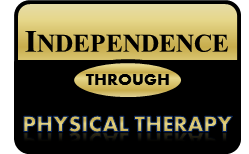|
If the cycle of injury continues, the tissues eventually rupture, pulling away from the bone or one
another, requiring surgery to repair the damage. Leaving the injury un-repaired means losing the
use of the injured tissues permanently. Other tissues will now be at risk for the same cycle,
ultimately ending in a disability. Too often, the end point of the cycle is being placed in a
nursing home. Ending the cycle by using appropriate treatment strategies will promote adequate
healing so that you can resume your normal lifestyle. Learning to change your behavior and
recognize early signs of tissue damage will help you prevent recurrence.
Watching professional sports has become increasingly difficult for me as a Physical Therapist:
Observing Kurt Schilling pitch despite a significant ankle injury when I knew he had been patched
up enough to play the game was eye-opening. Winning
was more important than healing. No wonder patients in
the U.S, healthcare system do not heal. When an
activity is valued more than healing, the body no healing will occur. For example, consider
crocheting for hours at a time, ignoring any discomfort. If you push yourself this way, it is similar to running a marathon
without adequate training.
What can you do to promote healing?
To promote healing, the first thing you need to do is rest and stop using the injured body part no
matter how simple you believe the movement is. While
healing, pain may go away so you think it’s okay to use the body part. But you will notice pain
later-- which means you caused more swelling and the healing process will have to start all over
again.
To help heal injured tissues, anything you can do to reduce inflammation and prevent new
inflammation in the area will be beneficial.
Rest. Use ice, lymphatic drainage massage, and
compression with a garment or bandage, and over-the-counter anti-inflammatory meds like ibuprofen
(taken according to package directions or your physician’s instructions) are all strategies that
can help with healing. Resting -- to allow the osteoblasts and fibroblasts to do their job
repairing the damage -- is the most important treatment for healing. If you keep moving that body
part, all the work will be torn apart and will have to start all over again.
Compression helps promote fluid reabsorption back inside the veins and lymphatics. Bandages or
compression garments can help your body carry fluids back to the heart. If the swelling is acute
you may be able to wean off of using this compression eventually. If you try removing the
compression and the swelling returns, you will likely need to continue using the compression to
maintain the reduced swelling. To determine if you need to use compression at night, remove the
compression before sleeping and assessing the body part in the morning. If it is increased in size
or become more painful, you need to wear compression at night.
During the day you want to see the size maintained in the evening/night compared to the morning as
well as prevent any worsening of symptoms which indicates you are doing the right amount of
activity, treatment and wearing the right amount of compression. If you wear no compression during
the day and you swell in the evening it means you need to do more treatment to keep it under
control. You can try increasing how often you do the Manual Lymphatic Drainage massage and if this
takes care of it-that is your answer. However, if you increase your massage and you still swell,
you have to change a different variable i.e. are you doing too much? If so, then you need to rest
more. If you are resting and doing the massage at least four times a day then other options would
be to increase the massage even more frequently or continue to wear the
compression.
Another important treatment is to perform passive range of motion (PROM) to make sure the soft
tissues stay stretched out while you are resting them. If this is done with something other than
the injured muscles doing the movement it should not cause increased swelling or trauma to the
area. For example on an injured shoulder the other hand can carry the weight of the arm or the
injured arm can be placed on a counter top or dresser and moving the body away from the injured
body part works well. This PROM should be done 4 times a day. One exception is for cancer patients
when lymph nodes have been removed. The range of motion is delayed until the fibroblasts have
repaired the lymphatic vessels. More will be discussed about this later.
Once the inflammation is well controlled and the tissues have been given an adequate amount of time
to heal, the next step to VERY SLOWLY test to see if you are ready to start exercising to gain
strength. If the trauma has been less involved it may
not take 6 weeks of resting. To test the waters after
3 days of no pain at all try a very small bit of activity no more than a few repetitions of a
movement. If the body part remains pain-free the next
day then the body tolerated this amount of activity and very slow and gradually increase activity
as long as no pain increases and range of motion and strength remain without seeing any
swelling.
If you continue to use an injured body part and not provide it rest then you are choosing
disability. Learning to listen to early warning signs
and reacting more rapidly will help you heal faster and prevent disability.
|
